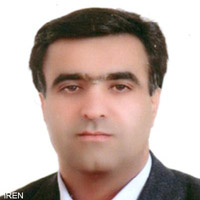onv Identifying dust springs using WRF-Chem model and GOCART and AFWA wind erosion schemas (simulated dust storm on 05/22/2018)an
Today, dust is a major challenge for human societies. Dusts have a significant impact on the Earth's radiation budget, global biochemical cycles, soil formations, and chemical compounds in the atmosphere. This phenomenon can affect public health indicators. The Iranian Central Plateau is located in arid and semi-arid climates; it is more likely to face this phenomenon than other regions. Dust management and control depend on identifying critical hotspots and stabilizing the harvesting area. The aim of this study was to identify internal dust sources using the vertical dust flux parameter.
Kavir and Loot deserts cover a large area of the Iranian Central Plateau. In this study, the WRF-Chem model and GOCART and AFWA wind erosion schemas were used to identify dust springs. Emission fluxes were used to detect dust springs. In this regard, a severe storm was selected on 05/22/2018 by WRF-Chem model for simulation. In order to verify and select the best wind erosion schematic of the Iranian Central Plateau, the data of MERRA2 re-analysis database and surface dust concentration values were used.
The results showed that the outputs of GOCART and AFWA schemas were different. The GOCART schemas identified three strong dust sources in the study area that were located in the Jazmourian Basin, the Loot Basin, and the Central Desert (Kavir Desert), but the AFWA schemas were able to identify only one weak source in the Loot area. The results showed that Loot Desert Center, south of Jazmourian Basin, as well as Dasht-e Kavir Desert Center (Central Desert) are known as internal dust sources. So that from one square meter of these areas, it is possible for 5800 micrograms of dust to rise into the atmosphere per second. Due to the fact that the storm lasted for 12 hours, about 2 tons and 505 kg of dust were transferred to the atmosphere from each hectare of internal dust springs. The results of the GOCART schema were more consistent with the three-hour time-series data of the MERRA2 re-analysis database and were selected as the best wind erosion schematic in the Iranian Central Plateau.
The results showed that the WRF-Chem model had a good ability to resemble the dust flux in the study area. The results of the GOCART and AFWA schemas were different. The AFWA model estimated the internal dust sources to be very weak. However, the GOCART model well detected internal dust sources.
- حق عضویت دریافتی صرف حمایت از نشریات عضو و نگهداری، تکمیل و توسعه مگیران میشود.
- پرداخت حق اشتراک و دانلود مقالات اجازه بازنشر آن در سایر رسانههای چاپی و دیجیتال را به کاربر نمیدهد.


